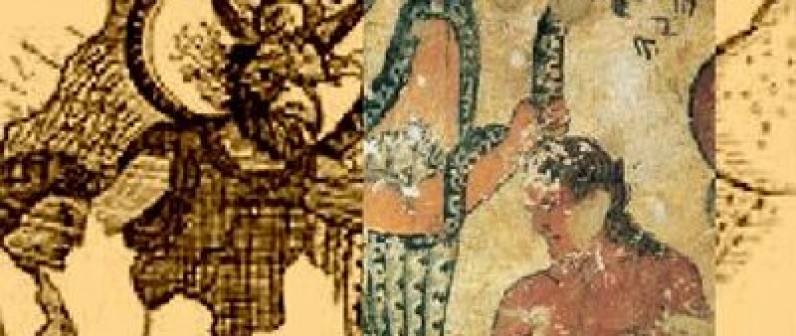Tuculca: Il pauroso Demone di origine Etrusca
Amici oggi vi racconto di un essere di origine Etrusca che ha tanto in comune con un altro essere di origine babilonese chiamato Lamashtu (il divoratore di bambini) di cui abbiamo parlato circa un anno fa… Tuculca, o meglio sarebbe scrivere Tuchulcha, ha un posto di primo piano insieme ad un altro essere noto come Charu (forse lo ricorderete di più con il nome che gli viene assegnato nella letteratura classica di Caronte, il traghettatore di anime).
L’etimologia di Tuculca sembra derivare da tuxul-xa ossia “il demone” e riporta ad un demone spregevole, rapinatore e laceratore delle anime, mezzo uomo e mezzo uccello rapace. Di lui esistono diverse raffigurazioni di cui voglio ricordare l’affresco della tomba dell’Orco presso la necropoli Etrusca di Tarquinia e datata circa al IV secolo a.C. dove l’essere viene raffigurato alato, di tinta giallastra, con orecchie equine e grande becco ricurvo e serpenti nelle mani e nei capelli.
Dotato di piedi a forma di artigli, come spesso si tende a rappresentare il Maligno in ogni religione, compare anche in diversi pezzi di vasellame ed in un sarcofago… Inutile sottolineare quanto sia simile ad altre creature demoniache del passato, sottolineando, se ce ne fosse bisogno, il fatto che tutte queste culture attingano ad una base comune poi fatta propria.

Tuculca: The scary Demon of Etruscan origin
Friends today I tell you about a being of Etruscan origin that has so much in common with another being of Babylonian origin called Lamashtu (the devourer of children) we talked about a year ago … Tuculca, or rather would write Tuchulcha, has a prominent place along with another being known as Charu (perhaps you will remember more with the name that is assigned in the classical literature of Charon, the ferryman of souls).
The etymology of Tuculca seems to derive from tuxul-xa or “the demon” and leads to a despicable demon, robber and tear of souls, half a man and a half bird of prey. Of him there are several representations of which I want to remember the fresco of the tomb of the Orc at the Etruscan necropolis of Tarquinia and dated about the 4th century BC. where the being is depicted winged, of yellowish tint, with equine ears and big curved beak and snakes in the hands and in the hair.
Equipped with feet in the form of claws, as often we tend to represent the evil in every religion, also appears in several pieces of pottery and in a sarcophagus … Needless to emphasize how similar it is to other demonic creatures of the past, emphasizing, if there it was necessary, the fact that all these cultures draw on a common base then made their own.